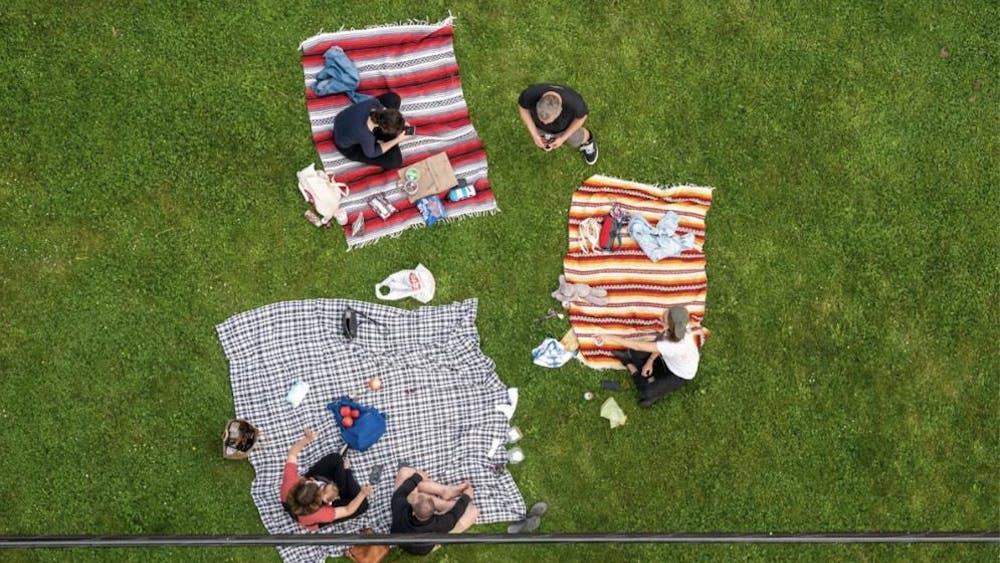At a time in the semester when I know that I ought to be focusing on my papers and exams, an email arrived in my inbox Monday morning that I could not ignore ("Message from Fr. John Jenkins," April 18). Reviewing in disbelief the press release on the University's investigation into the death of Declan Sullivan last October, and then the full report with similar incredulity, I could not help but think back to the Charlie Weiss era and his ill-fated proclamation, "9-3 is not good enough."
Following the internal investigation led by Executive Vice President John Afleck-Graves (the appropriateness of which I still contest on the grounds of a serious conflict of interest), the four factors that the University portends as the "primary" causes of the accident include one regarding the weather, two regarding the nature and condition of the lift at the time and a fourth describing the "staff members' lack of knowledge regarding on-the-field wind speeds."

I have a hard time accepting characterizations of the wind as "sudden and unexpected" in the press release and "unusual" in the report, given that the campus was in fact in the midst of a meteorologically foreseen windstorm at the time (one would be hard-pressed to qualify rain in a rainstorm as "unexpected" or snow in a snowstorm as "unusual"). Even still, my concern with these materials extends far more deeply in that I believe they reveal a frightening resistance on the part of the University administration to address this tragedy in any meaningful way.
Consider the recommendations of the investigation report, which, as the press release quickly points out, our heroic leader in the President's Office has already accepted. A few highlights:
Item I: Adoption of Specific Wind Limit. Is there a reason why the University had not adopted the 28 mph guideline of the International Standards Organization before?
Item IV: Appointment of Athletic Department Safety Contacts. Does this mean that nobody was responsible for the safety of students 40 feet in the air?
Item V: Establishment of Practice-Safety Protocol. What happens if the protocol fails, and what will be the University's response to future violations?
In an environment in which students are not (formally) allowed to drive even their own cars to University-approved events, I cannot believe that the Office of Risk Management and Safety had not considered the possibility of a fall accident before October 2010. In fact, I know that they had, because I myself was trained on a lift back in the day.

So my question becomes, "Why was the Athletic Department, the football program especially, allowed to operate under the radar, using lifts that had not been registered with Risk Management, defining their own usage standards and all, without designating specific individuals whose responsibility it was to approve student use of the equipment each time a student left the safety of the ground?" (For a discussion of the diffusion of responsibility this situation may have also created, see Anita Kelly's Psychology Today post, "How a Notre Dame Student Could Die So Senselessly," Nov. 8) Was it because of Director of Football Video and Film's Tim Collins' 20th year of service in his current role, or because of the monogram he was accorded in 2004?
In no case, however, does this lack of proper individuals and workplace practices mitigate what happened to Declan Sullivan. Instead, it renders his death all the more grievous, and we must ask ourselves what concrete actions the University has taken in the wake of his death to demonstrate its recommitment to student safety. And the answer, as related in the investigation report, apart from $77,500 paid to IOSHA (and undoubtedly an undisclosed settlement with the Sullivan family), is a resounding silence.
All we have as students are recommendations and talking points. And promises. And apology-laden emails from Fr. Jenkins, likely having passed first through the Office of the General Counsel, just to be sure. Heads bowed down and wrists held out for a slap. But the implications for every single one of us here at the University are enormous.
What if students in a chem or physics lab were let into a restricted area by someone who should have known about the heightened danger and an accident occurred? Would that person be fired? Based on precedent, we cannot say.
What if student workers in the dining hall were uncomfortable with a piece of equipment that seemed to be malfunctioning, were told to use it anyway and subsequently got hurt? Would the person who was responsible for keeping the equipment properly maintained continue to work for the University? No idea.
What if students in a theatre production were hurt by unsafe scenery, or athletes were injured by equipment that had not been set up correctly or students using University vehicles experienced an accident due to improper maintenance? Would the people responsible be released, to make room for real change, or would we grieve, gather at the Basilica, write some letters to the Viewpoint section and then proceed to largely ignore the underlying problem?
All the evidence suggests that nothing would change. And although the above situations are highly improbable, and although the departments above all have excellent safety records, we have to remember that Athletics did too before October 2010.
I therefore encourage all members of the Notre Dame family, and especially the students who like me, wore pins bearing the initials "DS" into the stands for the Tulsa game last season, to read the contents of the press release at the minimum and ask ourselves, "Is this really good enough for us?"
Philip Langthorne is a senior. He can be contacted at plangtho@nd.edu
The views expressed in this column are those of the author and not necessarily those of The Observer.












